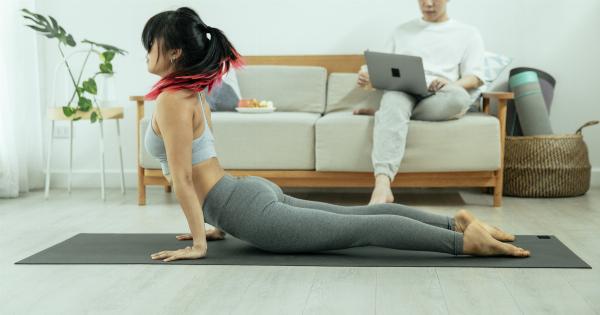Poor blood circulation can lead to a wide range of health issues, including varicose veins, blood clots, and even heart disease.
Thankfully, there are several exercises that can help to improve blood circulation throughout the body, ensuring that oxygen and nutrients reach all organs and tissues efficiently.
1. Walking
Walking is a simple yet effective exercise that can significantly improve blood circulation. Whether you prefer a brisk walk or a leisurely stroll, it helps to get your heart pumping and increases blood flow throughout your body.
Aim for at least 30 minutes of walking every day to reap the full benefits.
2. Cycling
Another excellent exercise for better blood circulation is cycling. Whether you prefer outdoor cycling or indoor stationary cycling, this activity helps to engage large muscle groups and promotes blood flow to your legs.
Start with shorter sessions and gradually increase the duration and intensity as your fitness improves.
3. Swimming
Swimming is a low-impact exercise that provides a full-body workout. It is particularly beneficial for those with joint pain or mobility issues. Swimming engages all major muscle groups, enhances cardiovascular health, and improves blood circulation.
Aim for at least two to three sessions of swimming per week.
4. Jumping Jacks
Jumping jacks are a great way to get your heart rate up and promote blood circulation. This simple exercise involves jumping while simultaneously spreading your legs and raising your arms overhead.
Perform sets of jumping jacks for a few minutes each day to improve circulation and boost overall cardiovascular health.
5. Yoga
Engaging in regular yoga sessions can work wonders for your blood circulation.
Various yoga poses, such as the downward-facing dog, the bridge pose, and the legs-up-the-wall pose, help to stimulate blood flow and reduce the risk of blood pooling in the lower extremities. Make yoga a part of your daily routine to enhance circulation and promote overall well-being.
6. High-Intensity Interval Training
High-intensity interval training (HIIT) is a form of exercise that alternates between short bursts of intense activity and brief recovery periods. HIIT workouts can be accomplished through activities like sprinting, jumping rope, or cycling.
These intense bursts enhance blood flow, improve cardiovascular health, and enhance blood vessel health.
7. Resistance Training
Resistance training, such as weightlifting or using resistance bands, is not only great for building strength but also for boosting blood circulation.
When you engage in resistance exercises, your muscles require increased oxygen and nutrients, leading to improved blood flow. Aim for two to three resistance training sessions per week to reap the benefits.
8. Pilates
Pilates is a gentle yet effective exercise method that focuses on core strength, flexibility, and body awareness. It also helps to promote blood circulation throughout the body.
Pilates exercises involve controlled movements and positioning that can aid in stretching and relaxing tense muscles, consequently enhancing blood flow.
9. Tai Chi
Tai Chi is an ancient Chinese martial art that combines gentle movements with deep breathing and mental focus.
It is often described as “meditation in motion.” The slow, deliberate movements of Tai Chi help promote blood circulation, reduce stress, and improve balance. Practice Tai Chi regularly to experience its numerous benefits.
10. Stretching
Stretching exercises are essential for maintaining flexibility, relieving muscle tension, and improving blood circulation. Incorporate both static and dynamic stretching into your daily routine.
Static stretches involve holding a position for a specific duration, while dynamic stretches involve active movements that gently take your joints and muscles through a full range of motion.
Conclusion
By incorporating these exercises into your daily routine, you can enhance blood circulation, improve cardiovascular health, and reduce the risk of various health issues.
Remember to start slowly and gradually increase the intensity and duration of your workouts. Before starting any new exercise program, it’s always advisable to consult with your healthcare provider to ensure it’s suitable for your individual needs and health condition.



























